Sustainability in Ecommerce: 8 Ways Your Brand Can Support the Growing Call for Eco-Friendly Practices

Arguably, since the Industrial Revolution, people have been focused on what a product can do to make their lives easier.
Electricity is a miracle that lets you extend your day late into the night.
Cars transport us wondrously from point A to point B.
Items we purchase online show up at our house days or even hours later, lovingly bundled in cocoons of plastic and styrofoam.
However, in recent years, there has been a switch.
Suddenly, consumers are realizing the efficiencies that have become the underpinnings of our modern culture — from lightning-fast shipping speeds to single-use plastic packaging — are also not something we can sustain with our planet’s finite resources.
Concern for the future of our planet and efforts to combat the impacts of global warming are on the rise. The Yale Program on Climate Change Communication found that between 2014 and 2019, the number of Americans alarmed about global climate change nearly tripled.
This switch has led to a greater concern for sustainability, particularly in ecommerce where some of our greatest conveniences are now being recognized for their heavy environmental impact.
In this deep dive, we’ll look at what sustainability in ecommerce looks like, why your brand may want to adopt more sustainable practices, and some suggested changes you can make to improve your brand’s footprint and earn new audiences in the process.
What Is Sustainability, Exactly?
Sustainability means doing something in such a way as to not deplete natural resources and to support long-term, global ecological balance. Looked at another way, sustainability is often seen as balancing meeting the needs of the present without compromising the needs of future generations to meet theirs.
Sustainability often means taking the path of less convenience. Transforming global practices into sustainable ones may well represent one of the greatest challenges of the 21st century. Ultimately, its goal is to create a balance between the environment, society, and economics.
Balancing these three competing concepts make up the three pillars of sustainability.
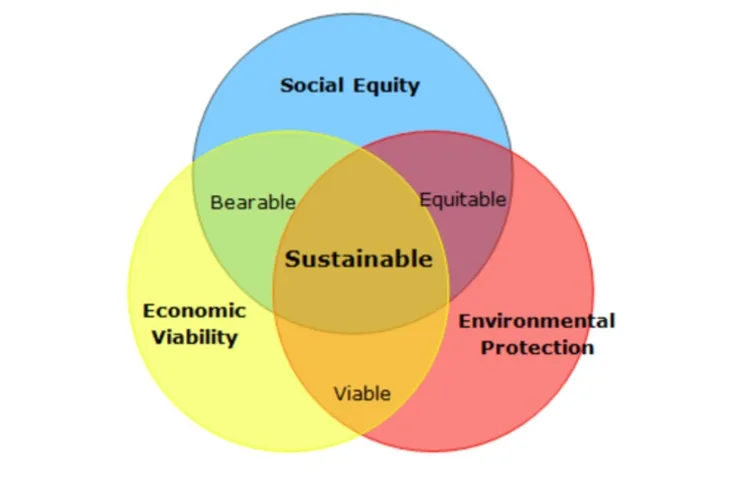
The three pillars of sustainability, image adapted from The Open University.
Environmental: The environmental pillar often gets the most attention as companies focus on how to reduce their carbon footprints, waste from packaging, and overall environmental impact. Tracking and focusing on reducing impact to the environment can have both a positive impact on the planet and a positive financial impact as more and more consumers come to value the efforts being made.
Economic: For a business to remain solvent, they do have to focus on their own viability and profitability as a company. That said, to be sustainable, profit cannot come at the expense of the other two pillars. Concerns under this pillar are whether or not the business stakeholders’ interests align with those of the company’s community, customers, and values.
Social: For the purposes of this article, we will be largely focusing on the environmental and economic pieces; however, the social pillar remains an important aspect of sustainability overall. This includes operating in a way that benefits employees and the surrounding community according to the social license. It also means paying attention to your entire supply chain and making sure the people involved in creating your products are treated and compensated fairly.
Consumers are Demanding Sustainable Ecommerce
The tides are turning and sustainability is becoming a bigger initiative for many businesses. This is sometimes motivated by a genuine concern by business stakeholders to operate in a more sustainable and ethical way.
However, in a wonderful synergy of the Environmental Pillar and Economic Pillar — sustainability is also becoming good financial sense because customers are clamoring for it.
Here are a few stats to consider:
According to a Nielsen survey, 73% of global consumers say they would definitely change their consumption habits to reduce environmental impact.
A survey of 6,000 consumers in North America, Europe, and Asia found that 72% of respondents reported actively buying more environmentally friendly products.
Research by NYU’s Stern School of Business found that 50% of the growth from consumer packaged goods from 2013-2018 came from products marketed as sustainable.
Millennials, at 75% of respondents, are more likely than Baby Boomers, at 34% of respondents, to say that they are actively changing their habits to be more sustainable.
Consumers are valuing these efforts. They are actively voting against sustainable products and companies with their wallets. As a business, if you can make a decision that will have both a positive economic and positive environmental impact, why wouldn’t you make those changes?
Of course, there are a couple of caveats to this.
First of all — and this applies to most aspects of business and marketing — know your audience. For better or worse, some demographics and consumer bases will put less of a premium on sustainability than others. While adopting more sustainable business practices will benefit the environment and prospect for future generations either way, you might not see the same ROI if your particular audience is not as sustainability-focused.
Secondly, make sure if you are making sustainable changes in part to help court the increasing customer base, that you are truly doing due diligence to make changes that will have a genuine and measurable difference. Current and would-be consumers will see through efforts that are paying lip service to sustainability without making real changes.
Ecommerce Businesses are Transitioning to a Sustainable Model
Brands both big and small are capitalizing on the call for more green initiatives and rolling out their own plans to make their businesses more sustainable.
For huge brands, these pledges come with great fanfare, but often these brands have the farthest to go to mitigate their enormous environmental impact. And in some cases, these efforts are antithetical to the company’s business model.
For example, Amazon announced that they plan to offset the company’s enormous greenhouse gas emissions and make Amazon carbon neutral by 2040. CEO Jeff Bezos even pledged $10 billion of his own money toward the projects combating climate change. While the goal is admirable, this doesn’t address the unsustainability of Amazon’s whole business model which relies on rampant one-click consumerism and blink-of-an-eye shipping standards.
Fast-fashion brand Zara has pledged to make all of its brands use only organic, sustainable, or recycled materials for their clothing by 2025. They also said they plan to transition to zero landfill waste and to use renewable sources to power 80% of their distribution centers, offices, and stores. However, again, their business model relies on fast fashion and people buying and wearing items for a short time, which even if the materials are more Earth-friendly is at odds with a sustainable solution.
Smaller and midmarket DTC brands are more poised to make sustainability a core part of their business model, which can help them differentiate from big box stores and ecommerce giants. They can make it a core part of their identity from the beginning or find it easier to make changes to pivot toward what their customers are demanding.
8 Steps to Move Toward Sustainable Ecommerce
Whether you start small or go all in, here are a few steps you can take to start making your business more sustainable.
Update your brand ethos.
Implement sustainable shipping.
Reduce packaging.
Create recycling policies.
Reduce energy waste.
Add products that support sustainability
Create an offset service charge at checkout.
Consider an ecommerce marketplace to resell your used merchandise.
1.Update your brand ethos.
Your brand ethos tells your customers who you are as a brand and what you value. It can be an important part of carving out your brand story and how your customers see you. A sustainable brand is one that has taken a clear stance on sustainability and has undertaken the environmental or social practices to support that.
As an ecommerce company, your brand ethos should be reflected across your site and channels. It can be consistently conveyed through a strong statement on your website, your blog posts, your social media, and all of your content and copy.
Olive, a UK-based contemporary clothing brand, is an example of this. They include a statement about their focus on ethical and sustainable practices both in their “About Us” page and in a longer stand-alone “Corporate Conscience” page.
On their About Us page, they explain:
We’re conscious that we are a part of a chain that begins with farming and yarn production, and ends with style; we take our own responsibilities within that chain seriously, and are forging forward sensitive to the ethical considerations that preoccupy us and many of our customers alike.
Of course, updating your mission statement probably won’t be the first step you take because you will also need to back up your statement with some of the actions below in order to be taken seriously by consumers.
2. Implement sustainable shipping.
The demand for fast shipping in ecommerce has never been higher. And with nearly 165 billion packages shipping in the U.S. alone, the volume of items being shipped as a result of online shopping has a huge environmental impact. A good portion of this carbon footprint comes from the last mile of the shipping process when the package is moved from a fulfillment center to a home address which adds to vehicular pollution in residential areas.
There are many ways to reduce the impact of shipping from using recyclable packaging or reducing the amount of packaging to printing labels using thermal printers to save on ink. We’ll detail some of the packaging steps in greater detail below, but another way to improve on shipping is to investigate eco-friendly programs from major carriers like FedEX, UPS, and USPS that can offer paperless invoicing and other green options.
Another way to make your shipping practices more sustainable is to cut down on returned merchandise, as being shipped both ways obviously doubles the impact. Provide very clear product descriptions and sizing information (if relevant) to make sure customers know exactly what they’re getting. You can also adapt your return policy to discourage customers from, say, buying multiple sizes of an item to see what fits best.
3. Reduce packaging.
As anyone who has ever ordered from Amazon and received a canoe-sized box to house a new iPhone case knows, packaging waste is one of the dirty secrets of many ecommerce brands. According to data from First Insight (modeled through Statista) nearly half of people think Amazon shipments include excess packaging (although this varies across generations).
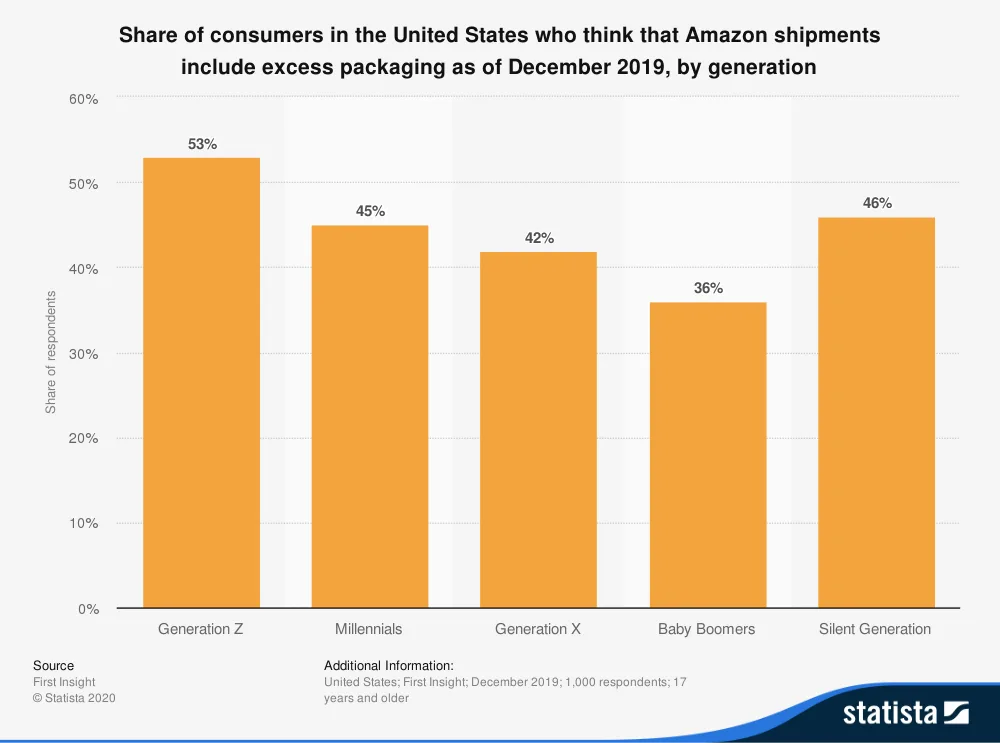
Making concrete efforts to reduce ecommerce packaging waste can have a significant impact on your business’s footprint. This can involve buying boxes in more sizes to better fit smaller items. Boxes that are too large not only waste space, but also require more packing material to protect items.
Saloni Doshi, CEO of compostable and biodegradable packaging seller EcoEnclose, explains why offering appropriately-sized packaging is an important part of their business:
We wanted to have an offering that allowed people to have 100% recycled boxes, but also boxes that were custom cut for their needs (and ensure they did not have to ship any excess air), and also printable. We invested in the ability to custom print at fairly low volumes as well.
4. Create recycling policies.
In addition to sizing boxes and accompanying packaging to the size of the item being shipped, companies can also reduce waste by choosing sustainable packaging and packaging materials.
Here are some quick facts:
73% of Americans have access to curbside recycling and 94% have access to some form of recycling.
Recycling cardboard takes only 75% of the energy required to make new cardboard.
One ton of recycled cardboard saves 9 cubic yards of landfill space.
Using cardboard boxes and mailers that are recyclable and making the process of recycling easier for customers, businesses can dramatically reduce the amount of waste they produce.
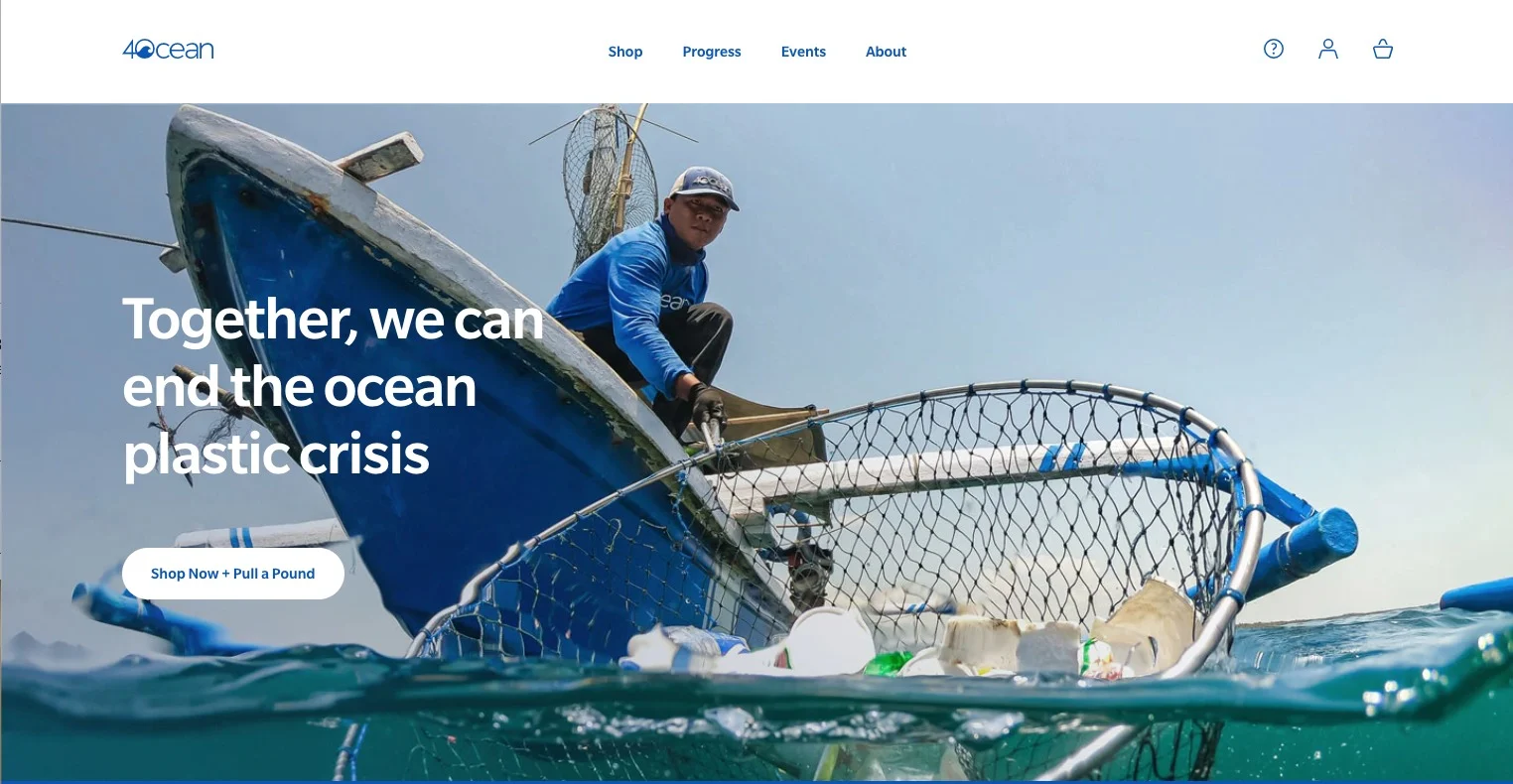
4Ocean is an online retailer whose whole business model is focused on sustainability. They sell bracelets and apparel but are also dedicated to returning their profits to helping cleanup the Earth’s oceans of plastics. Naturally, they’re committed to sustainably in all aspects of their business from the products to the packaging. They use 100% recycled apparel mailers for their products and worked to custom design them to fit their products.
5. Reduce energy waste.
Sustainability can also go beyond your shipping practices and product makeup to overall business practices including how your offices and warehouses are run. Making simple changes such as turning off equipment when not in use, investing in low energy lighting and reducing the temperature in the office can significantly lower energy bills.
The first step in reducing energy waste in your business infrastructure is to do an energy audit to determine where cuts can be made. You can then start making changes based on what will be the easiest lift with the highest overall impact.
6. Add products that encourage sustainability.
This one will depend on what you already sell, but one way to make sustainability a key part of your business is to include sustainability-focused products in your offerings, especially as a growing market of customers are interested in buying such products.
This could mean providing more eco-friendly alternatives to existing products or that solve problems that allow people to live more sustainably. For example, LARQ is a company that makes self-cleaning water bottles that are still aesthetically pleasing to encourage more people to eschew single-use plastics. LARQ also donates a portion of proceeds to 1% for the Planet to benefit the environment and further its sustainability mission.
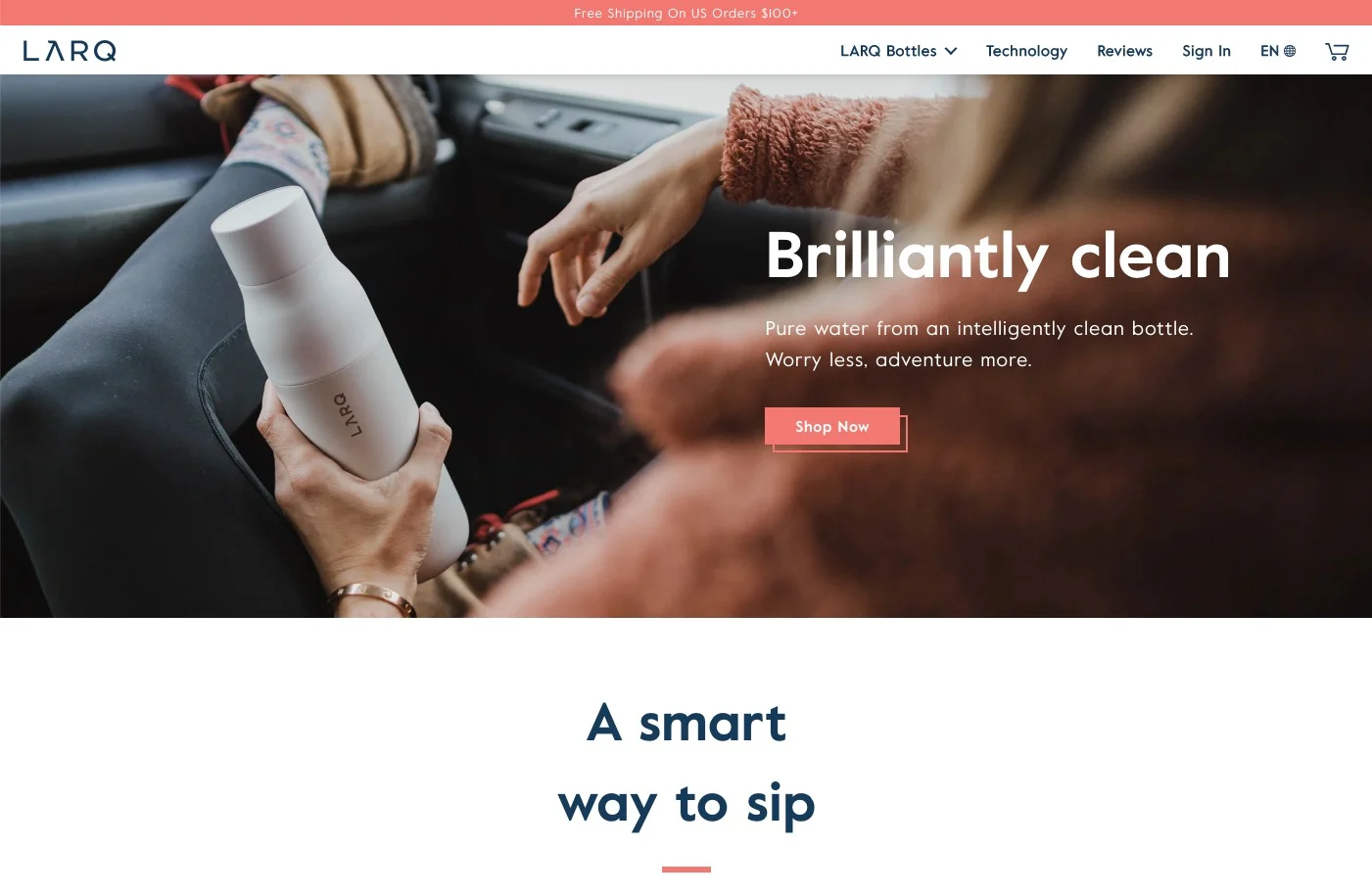
Co-founder and CEO of LARQ, Justin Wang, explains his vision for the company:
We founded LARQ on the vision that innovative technology can be combined with inspirational design to help people access pristine drinking water easily and sustainably. Utilizing our proprietary UV-C LED technology, our bottles help people make the more sustainable choice without compromising on aesthetics or functionality.
By including products in your line that help people live more sustainably, you are opening up your business to a large customer base eager for such products.
7. Create an offset service charge at checkout.
One effective way to balance some of the associated environmental downsides accumulated from the creation and purchase of your product is to purchase carbon offsets. Essentially offsets are measures designed to balance the amount of carbon dioxide produced by investing an equal amount in projects related to reducing greenhouse gas emissions.
In early 2019, craft marketplace Etsy announced that they would be the first global ecommerce company to completely offset the greenhouse gas emissions produced by their sellers shipping products.
Your business can make investments in offsets a part of your budget. However, you can also allow customers to help by providing online shoppers with an optional offset charge. Be sure to choose a reputable carbon offset project to disperse the funds raised. There are integrations like Cloverly that can make offering carbon offsets at checkout simple.
8. Use an ecommerce marketplace to resell your used merchandise.
One final step that may be a good fit depending on your industry is to help your customers give your products a second life. Typically, products move from being created to being used and finally being disposed of in a linear fashion. Efforts are being made to change this into what is known as the circular economy.
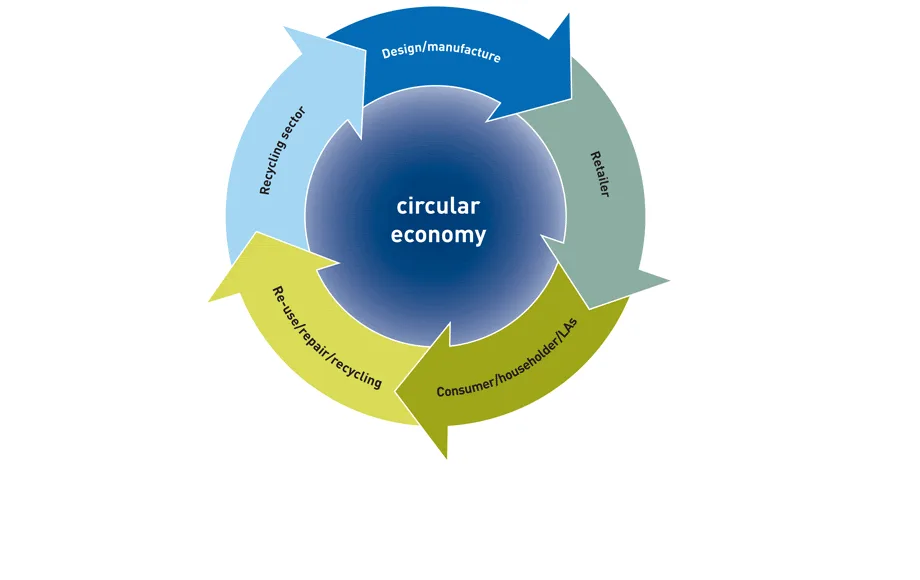
Photo credit: https://www.wrap.org.uk/about-us/about/wrap-and-circular-economy
The circular economy involves giving products a second life by encouraging them to be passed on to a second or third owner after the first has gotten tired of them. Products can then be recycled to be created into new products.
Resale marketplaces and peer-to-peer networks that allow consumers to buy used products are growing in popularity, especially among Gen Z shoppers. You can encourage your customers to be part of the circular economy by providing opportunities for them to resell products or purchase recycled products. For example, outdoor apparel seller Patagonia offers a spot on their website called Worn Wear where users can buy clothes made from other clothes.
Executive Summary
Not all of these steps make sense for all businesses. You know your business best, and you know your customers best.
Sustainability and the future of our planet is an issue that affects all of us as global citizens, and younger shoppers in particular as those who will inherit our future Earth, are starting to take a stand with their dollars.
By making efforts toward creating a more sustainable product, supply-chain, or shipping method you may be able to have the dual wins of both creating a more sustainable future and helping to differentiate your brand in a sea of competitors.
